Sasso Corbaro Castle is one of three castles situated in the town of Bellinzona, in the Bellinzona District of Switzerland. This fortress is a classic example of Sforza architecture and derives its name from the dark, craggy rock on which it is perched.
Constructed in 1479, Sasso Corbaro Castle holds the distinction of being the youngest and highest among the trio of castles in Bellinzona. Rising to an impressive 230 meters above the city, its parapet provides an unparalleled vantage point, offering a clear and panoramic view of the city and its surrounding areas.
Now, let’s delve into the Top 10 Interesting Facts about Sasso Corbaro Castle.
1. Sasso Corbaro Castel served as a Prison
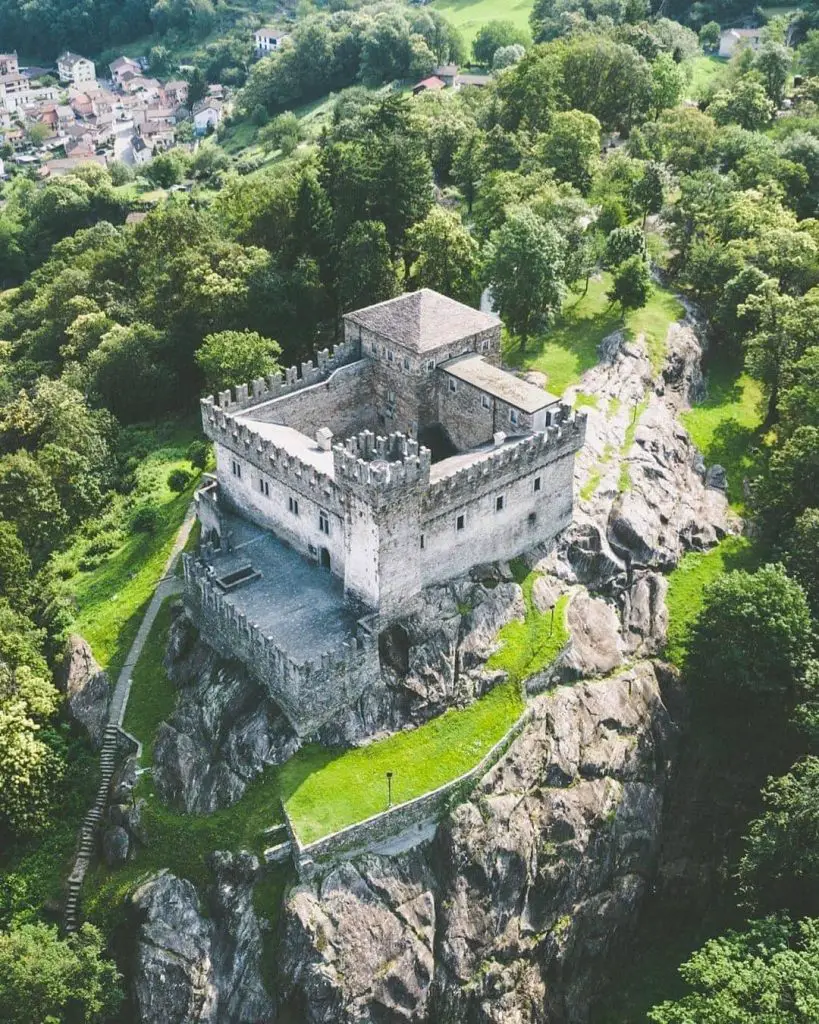
Sasso Corbaro Castle occupies a solitary rock, and its initial construction began in 1478 with the purpose of sealing a gap in the city’s defenses. Interestingly, during times of peace, the castle served as a prison.
The living quarters, consisting of two-story buildings, were situated along the southern and western walls of the castle. The chapel found its place on the eastern side of the courtyard.
Adding to the castle’s architectural allure, a 14-meter-high tower stands proudly in front of the entrance, featuring adjoining houses that open into the inner plaza. This structure reflects the typical characteristics of 15th-century design, marked by pointed windows and elevated chimneys, contributing to the castle’s historical and visual significance.
2. Visit the Archaeological and Civic Museum
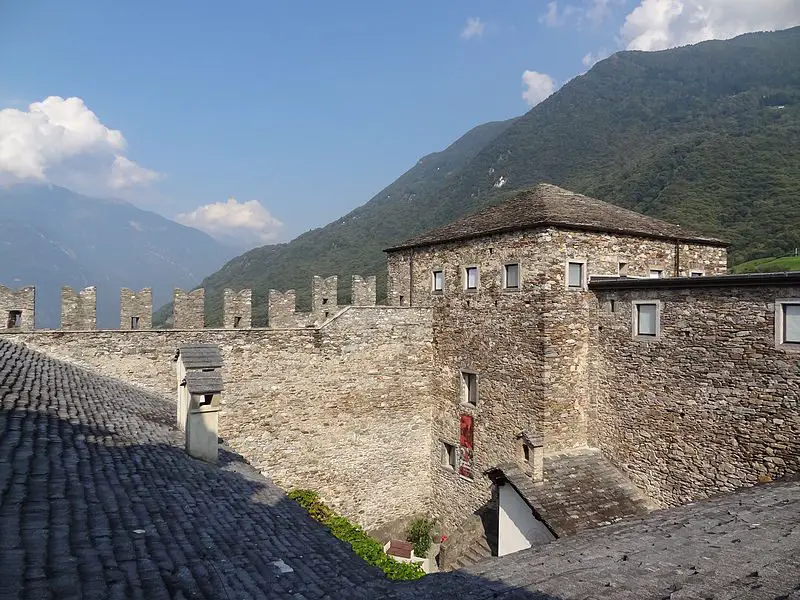
Montebello Castle serves as the home of the Archaeological and Civic Museum, an institution that opened its doors in 1974. Situated within the tower and former residential quarters of Montebello Castle, the museum is designed to showcase historical and archaeological artifacts.
The museum is organized into two distinct sections—history and archaeology. The history section features noteworthy elements such as several capitals from the 15th century, a rare 13th-century Baptismal font, and drawings and sketches by various artists.
On the other hand, the archaeology section boasts a diverse collection, including items dating back to 1400–1500 B.C. The exhibit encompasses ceramics, glassware, funeral urns, ornamental objects, and jewelry made of iron and bronze, all originating from the canton. The museum welcomes visitors from March to November.
Access to the castle can be achieved by taking an elevator from the base of the rock to the castle grounds or by navigating steep, narrow streets from the city center, leading through the city wall and onto the castle grounds. The varied means of access contribute to the castle’s accessibility and provide visitors with multiple routes to explore its historical treasures.
3. The Collegiate Church of Saints Peter and Stephen
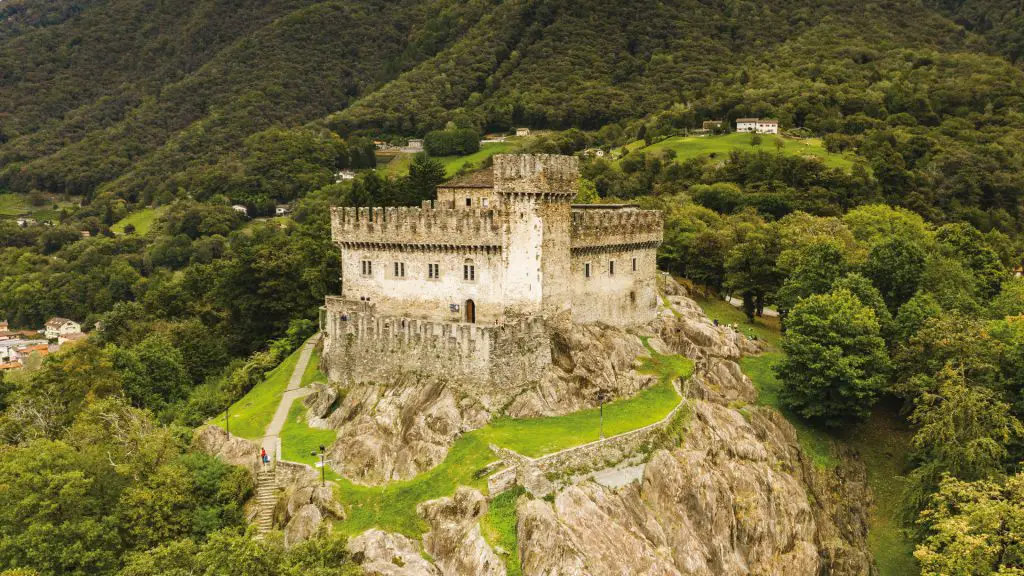
The Collegiate Church of Saints Peter and Stephen stands as a significant religious edifice in Bellinzona, Switzerland. Serving as the focal point of the Ticinese city parish, this historic church is adorned with numerous works of art dating back to the 15th century.
This venerable church is emblematic of the Renaissance period, representing an architectural and artistic legacy within the Parish of Ticino. Within its walls, visitors can explore an impressive collection of artworks spanning the 15th to 19th centuries.
Notably, the church features a distinctive triangular tympanum, embellished with three statues that mirror the Madonna and two angels. This artistic element adds a unique and visually striking aspect to the architectural richness of the Collegiate Church of Saints Peter and Stephen.
4. Discover the Fortress of Bellinzona with Artù
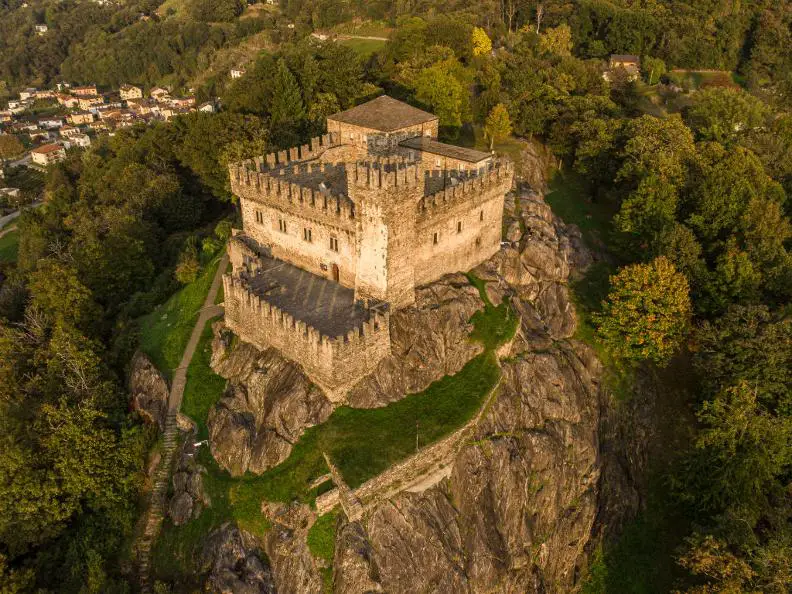
The Artù tourist train offers a charming excursion that commences from the old town, providing a comfortable journey to the Montebello and Sasso Corbaro castles. During this leisurely trip, guests have the flexibility to disembark and reboard at key monuments and historically significant sites along the route.
The entire sightseeing adventure spans approximately one and a half hours, allowing passengers to explore the most noteworthy landmarks at their own pace. Tickets for this delightful journey can be conveniently acquired either directly on the train or from the tourist office in Bellinzona, ensuring easy access for those eager to embark on this scenic exploration.
5. Sasso Corbaro is Part of Bellinzona Castles
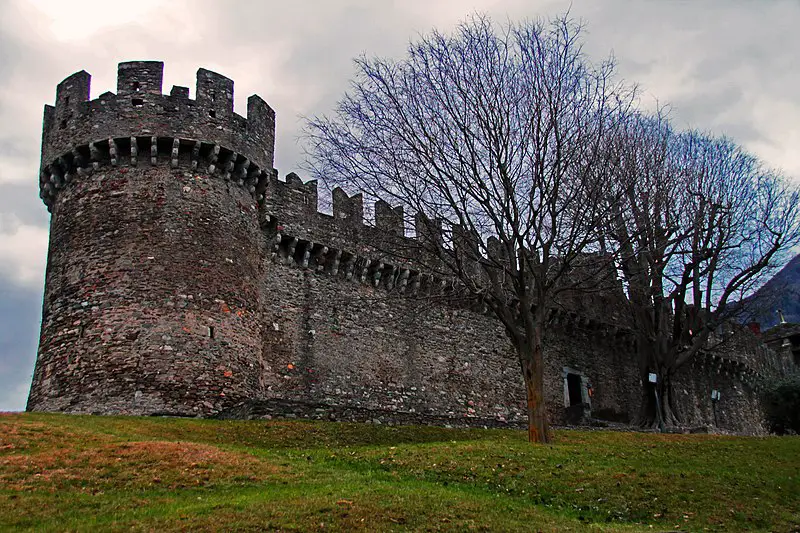
Sasso Corbaro Castle is part of the Castles of Bellinzona, a collective of fortifications situated in and around the town of Bellinzona. The ensemble includes Castelgrande Castle, Montebello Castle, and Sasso Corbaro Castle.
Originally built as defensive structures, these castles occupy a strategic position aimed at overseeing key trade routes. They were strategically located to control vital trade routes, including those through the valley of the Ticino river pass, Alpine passes, and the San Gotthard pass.
Designated as a UNESCO World Heritage Site in 2000, the Castles of Bellinzona serve as an exceptional and well-preserved example of late-medieval defensive architecture. Their historical significance lies not only in their defensive role but also in their contribution to understanding the strategic importance of trade routes in the region during that period.
6. Sasso Corbaro Castel was once a Hotel

In 1871, Sasso Corbaro underwent a transformation when it was sold and repurposed into a hotel. Subsequently, a restaurant was added to the premises. However, recognizing the historical significance of the castle, the canton intervened in 1919, placing it under protection to prevent further alterations.
Presently, Sasso Corbaro Castle hosts the Sala Emma Poglia, commonly known as the “wooden room,” which was constructed for the Emma family in the 17th century. This room is characterized by its complete walnut paneling and features the “stüva,” the stove that once provided warmth to the family. Notably, the stove bears the distinctive crest of the Emma family, depicting an eagle and a lion rampant, adding a touch of historical richness to the castle’s interior.
7. The Castelgrande Castle
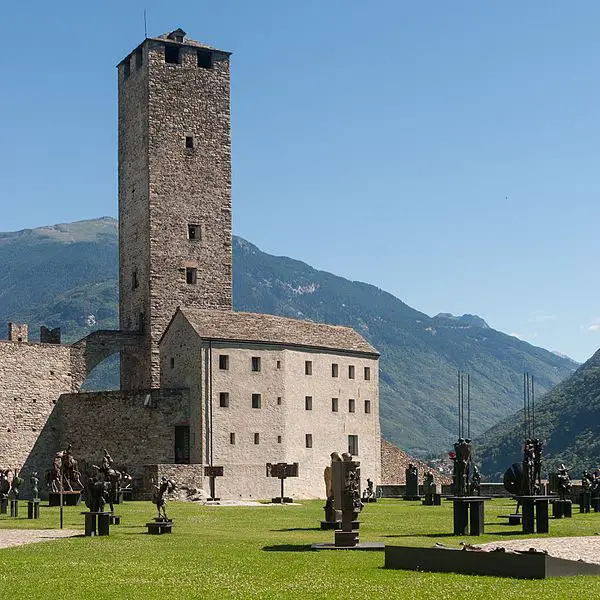
Castelgrande Castle stands as one of the oldest castles in Europe, with origins dating back to the 1st century BC. For a considerable period until the 13th century, it served as the sole fortified section of Bellinzona.
Within the castle’s walls, visitors can explore a museum that showcases a diverse collection of artifacts spanning from the first Neolithic village to the 20th century. Noteworthy exhibits include the decorated ceilings from Casa Ghiringhelli and a former inn, the Albergo Della Cervia. Additionally, the museum houses a collection from Bellinzona’s mint, providing a comprehensive glimpse into the historical and cultural evolution of the region over the centuries.
8. Walk through San Bernardino Pass
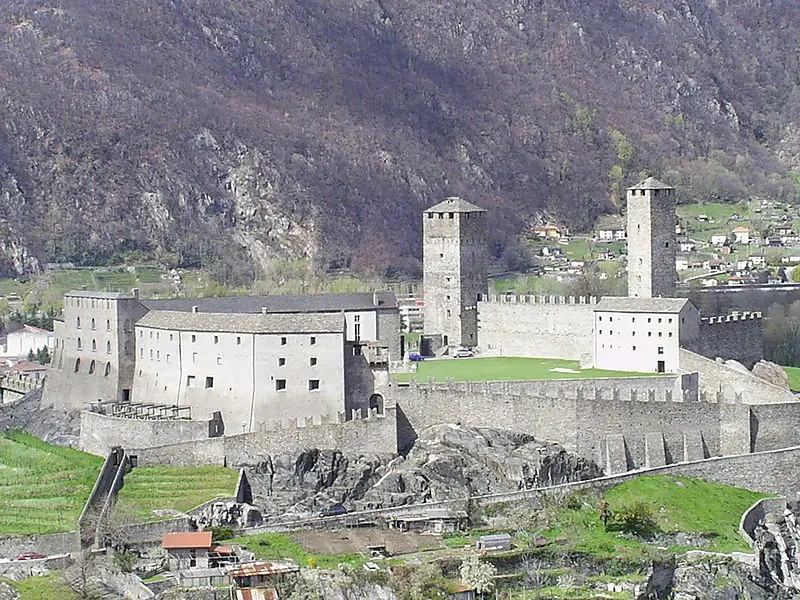
The San Bernardino Pass stands out as one of the magnificent high-altitude passes in the Swiss Alps, linking the picturesque Alpine valleys of Hinterrhein and Mesolcina.
Its historical significance dates back to the fifteenth century when it served as a crucial mule track along the route between Thusis and Splügen, famously known as the Via Mala. In 1770, a road for wheeled vehicles was established, undergoing significant improvements between 1821 and 1823.
A significant leap in transportation occurred in 1967 with the completion of the San Bernardino road tunnel, greatly enhancing traffic flow. It’s worth noting that the pass road is accessible only from May to November, providing a seasonal window for travelers to experience the stunning landscapes and historical charm of the San Bernardino Pass.
9. The Collegiate Church of Saints Peter and Stephen
The Collegiate Church of Saints Peter and Stephen, situated in Bellinzona, Switzerland, stands as a significant religious edifice. Serving as the headquarters of the Ticinese city parish, this venerable church is adorned with a plethora of artworks that trace their origins back to the 15th century.
This ancient church is not only a place of worship but also a symbol of the Renaissance period, representing a historical and artistic legacy within the Parish of Ticino. Within its sacred confines, visitors can explore a diverse collection of great works of art spanning from the 15th to the 19th centuries.
A notable feature of the church is its triangular tympanum, adorned with three statues that mirror the Madonna and two angels. This artistic element adds a distinctive and visually captivating aspect to the architectural and cultural richness of the Collegiate Church of Saints Peter and Stephen.
10. The Teatro Sociale Theatre
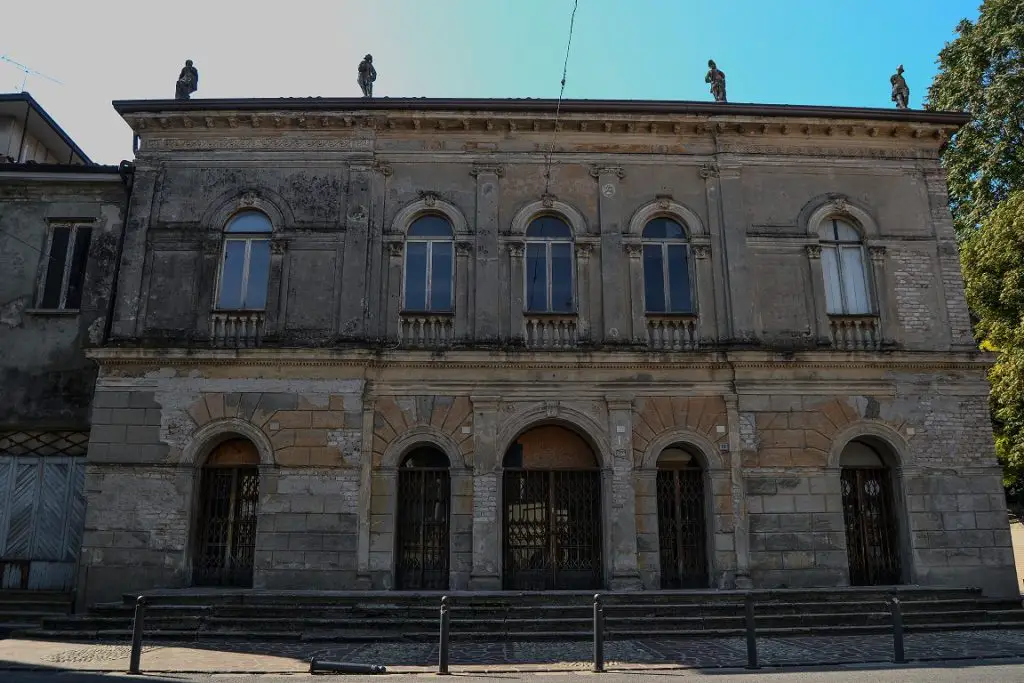
The Teatro Sociale theater, situated on Piazza Governo near Caffè degli Artisti and Ottica Belotti, serves as a focal point for vibrant musical concerts and premier shows in Bellinzona.
Built in the 19th century, the theater is a striking example of Neo-Classical architecture, designed by Von Mentlen. Drawing inspiration from the style of Milan’s La Scala, the building has been an integral part of Bellinzona’s cultural scene. In a later phase, it underwent a significant renovation led by Giancarlo and Pia Durisch, resulting in its current distinctive appearance. The Teatro Sociale continues to be a hub for the arts, offering a venue where audiences can experience top-notch performances in a setting that reflects both historical and contemporary influences.